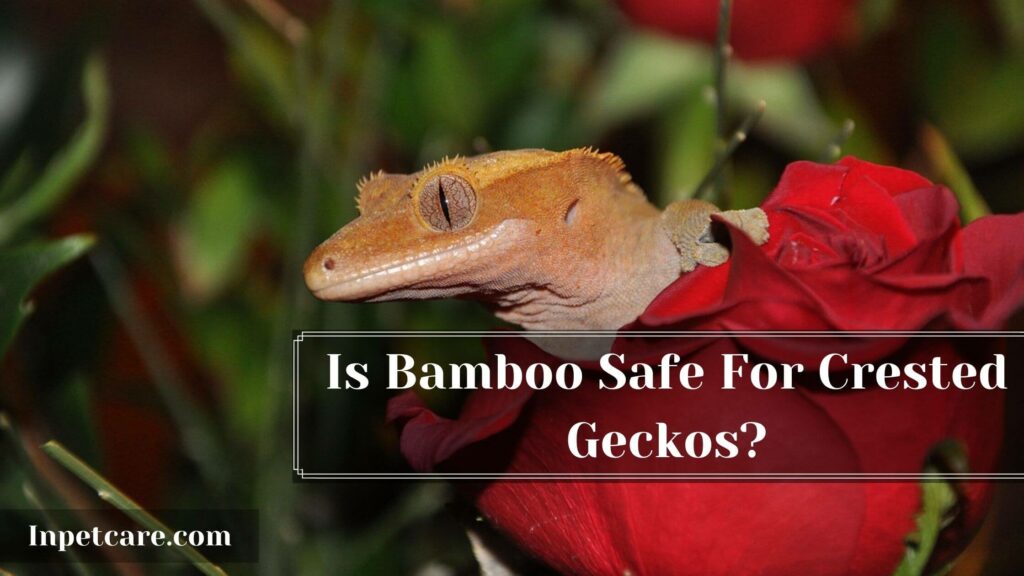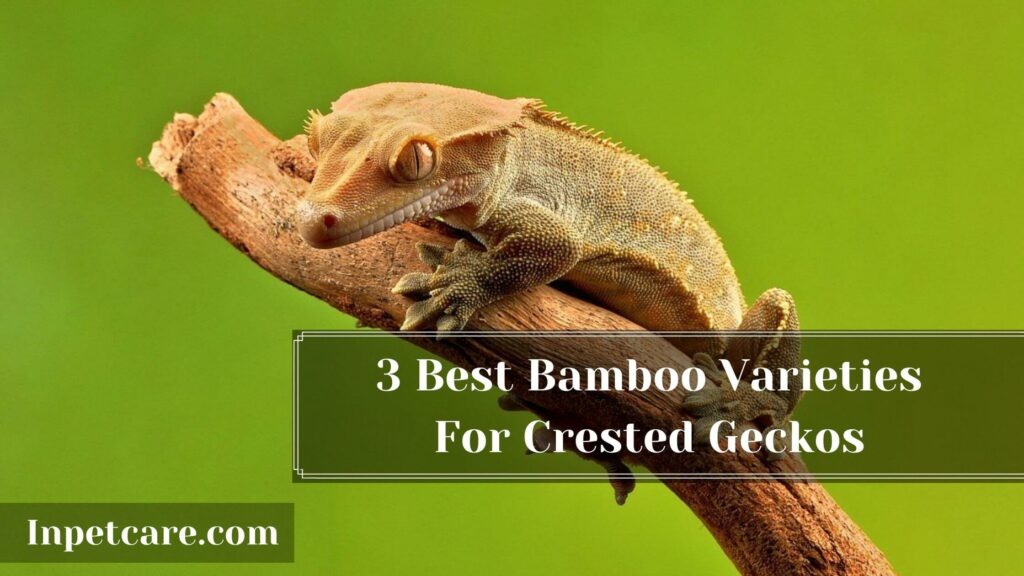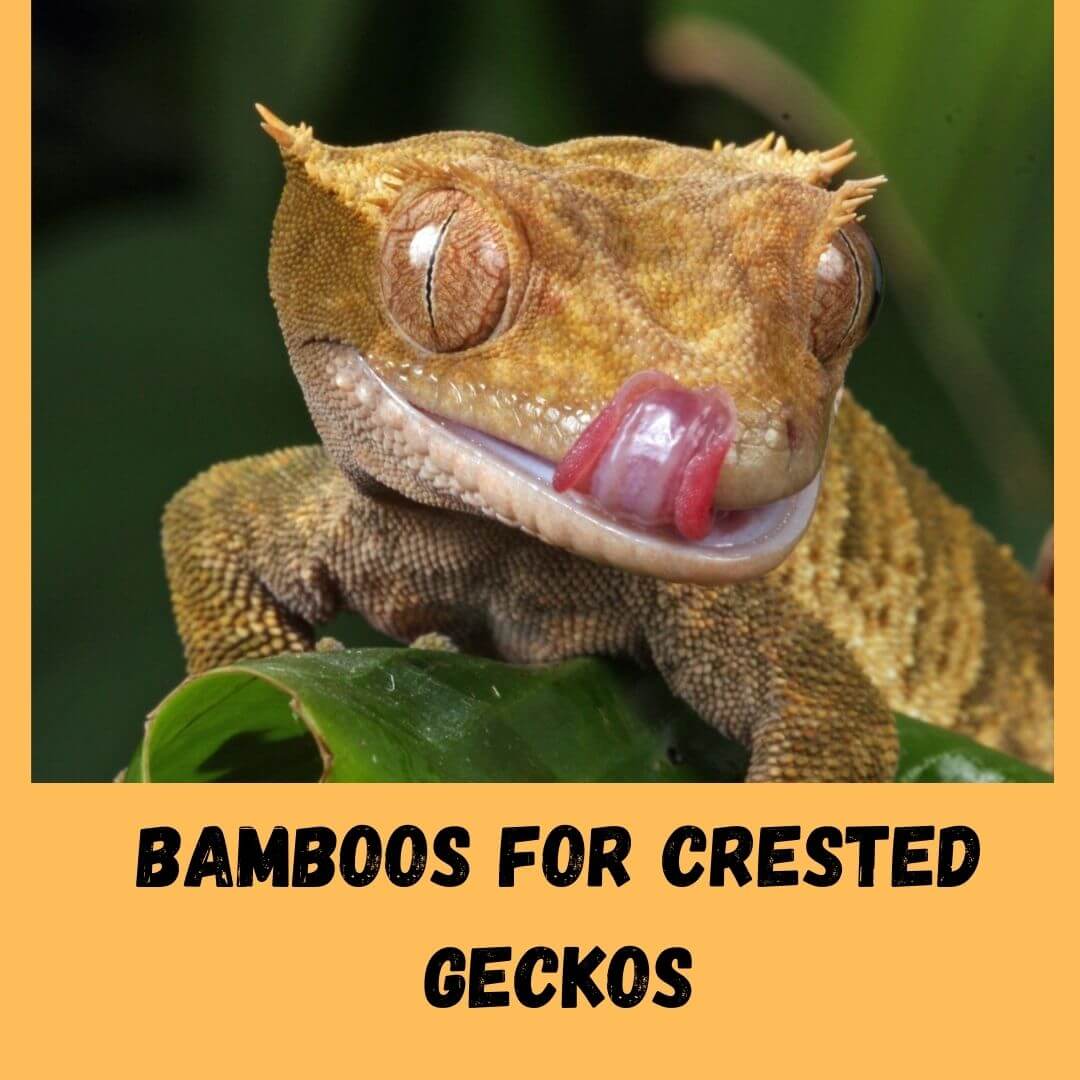If you want to add some decoration to your crested gecko enclosure, consider having plants. Bamboo is one of the fastest-growing plants on Earth, which is also suitable for keeping in reptile enclosures. Do you know that Chinese bamboo can grow almost 1 m in a day? It is common to notice in dense bamboo forests where only a tiny portion of sunlight reaches the ground. Therefore, Is Bamboo Safe For Crested Geckos?
The evolution allows bamboo to reach as high & quickly as possible to get the sunlight needed for further growth. But, as we know, bamboo also contains cyanide. Does it make a good choice for crested geckos? Well, crested geckos eat plant matter with low toxins levels.
Therefore, the bamboo taste won’t make a difference in your crested gecko health if it’s in moderation. Plus, keeping a bamboo plant in an Iguana enclosure won’t make them eat it all the time. As long as you are keeping your crested gecko on a proper diet, they are just going to take a few nips a day. Few nips of bamboo will not be as harmful as other plants that contain high amounts of cyanide. Let’s talk about whether it is safe for crested geckos or not. Here I am going to answer is bamboo safe for crested geckos.
Is Bamboo Safe For Crested Geckos?

Yes. Bamboo is entirely safe for crested geckos and its enclosure. Bamboo is edible for reptiles and animals as it is not toxic. Do you know that bamboo can contain up to 22% protein, making it even more suitable for crested gecko? Since actual bamboo has been used in many industries, nothing will happen if your crested gecko eats them. crested geckos is not likely to get sick or eat a few parts of bamboo leaves hurt.
However, consumption of bamboo shoots in sufficient quantities may contribute to some cyanide poisoning. If you notice your crested gecko eating bamboos, don’t be surprised or worried about it. It’s okay for a crested gecko to chew the plant-like bamboo with no toxin. Solid bamboo being 100% safe for reptile consumption, you should only choose the variety that tends to be tiny in size, making it suitable for keeping in an enclosure or vivarium.
Do you know that Pleioblastus Distichus species of bamboo is the smallest known bamboo species you can ever have? This is known to reach a height of up to 1′ only ?. Their branches grow two leaves being 1″ long and ¼” broad in size. Additionally, Pleioblastus Distichus is very similar to a dwarf fern leafy plant but only about half of the size.
3 Best Bamboo Varieties For Crested Geckos

1. Bambusa Vulgaris or Buddha Belly Bamboo.
This giant Buddha belly bamboo is known to grow up to 78 m in height. However, its size can be easily trimmed if needed. Adding to this, bamboo comes with a lovely arching shape. Make sure not to cut it too short as it can impact the integrity of the giant Buddha belly bamboo shape.
Being very ornamental, it’s a non-invasive tropical species of bamboo that makes an excellent choice for any enclosure with warm temperate conditions. Out of many varieties, it is the most preferred choice of people looking for ornamental value. These pieces of bamboo are also available at different heights ranging from a few inches to 8 feet tall.
Adding to this, the appearance of this bamboo is alone enough to bring instant freshness to your crested gecko enclosure. According to many beliefs, do you know that bamboo is also a sign of luck and prosperity? For decades, bamboo plants have been considered auspicious according to Indian Veda: Vastu Shastra and Feng shui. Keeping your bamboo plant in your home or office will bring luck, good fortune, and wealth. With time, many gardeners and botanists have worked a lot on modifying different bamboo plant species to keep them outdoors as a houseplant.
Do you know that this species moderately have loose clumps with no thrones? The clusters look lemon yellow with green stripes. It comes with only a few leaves, and you will find them being dark green. Being inflexible but initially intense, this species of bamboo is thickly walled. The densely tufted stem of a giant Buddha bamboo can grow up to the height of 30-70 ft with 4-10 cm thickness.
2. Fargesia Rufa or Dragon Head Bamboo.
With this species, you can add great variety to any reptile enclosure. Dragonhead bamboos are known to reach up to about 10 feet at maturity. However, it takes several years to reach their total potential growth. If you want to fill in The hedges, you should place each one 5 feet apart.
These clumping bamboos are non-invasive species, so you don’t need to contain them. Being a beautiful specimen, it offers lovely hedges and screening. Make sure to have a well-drained substrate or soil in their enclosure to plant Dragon head bamboo. Dragon head bamboos are acidic and prefer shady areas during the summer season.
They often grow in the shade to survive the hottest day and winter winds. This specimen is a highly ornamental plant with finely textured foliage and striking Red cane, which turns yellow when aged. The Dragon head bamboos are vigorous growing plants that grow numerous new stems annually.
It serves as an excellent hiding place for crested geckos. They can withstand enclosure temperature as well if cared for properly. As this specimen also needs protection from the sun in the hot late afternoon, it is best to keep it placed indoors. Before putting it anywhere in your home, do your proper research because it needs an 80-100 cm wide stripe.
Adding to this, hanging branches of Dragonhead bamboo also become more wild and dense. From my recommendation, if I were at your place, I would have given this specimen a try. You can control its height through the trimming process. The Dragonhead bamboos grow best in fertile but moisture-retaining soils as a shade lover.
3. Fargesia Nitida or Chinese Fountain Bamboo
This specimen is also a slow grower, reaching a height of about 3 m. The Chinese fountain bamboo is a Hardy and thorny plant that can withstand severe winters.
This non-invasive specimen is very easy to grow but best placed in the shade. They can grow up to 50-75 cm per year. Being very adaptable, it is suitable to use as a hedge or windbreaker on the lawn and gart. Yes, this specimen can tolerate hot scorching sun. Therefore, they can withstand any enclosure temperature. Adding to this, Chinese fountain bamboo leaves tend to curl up when there is strong sunlight.
Being a slow-growing plant, it grows in a vertical direction. The leaves tend to be dark green with 9 cm long and 1 cm across margins. The kings of Chinese fountain bamboo tend to be purple with a diameter of up to 1 cm. The Chinese pant fountain roots emerge from rhizomes.
- Do Crested Geckos Need UVB Light? (2022 Guide)
- Do Crested Geckos Need A Heat Lamp?
- How Do Crested Geckos Drink Water? (2022 Review)
FAQ

94% of pet owners say their animal pal makes them smile more than once a day. In 2007, I realized that I was made for saving Animals. My father is a Vet, and I think every pet deserves one. I started this blog, “InPetCare”, in 2019 with my father to enlighten a wider audience.
